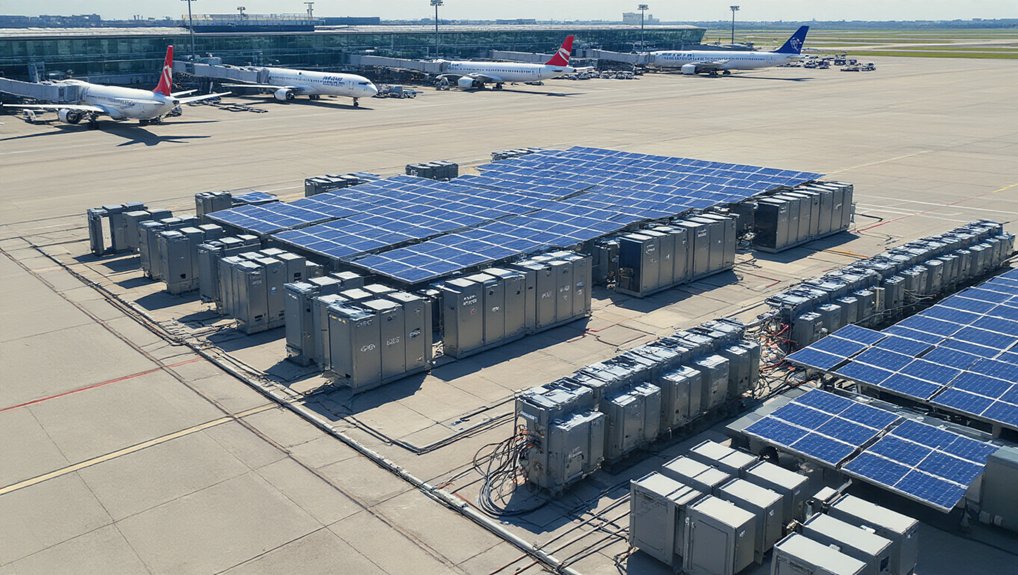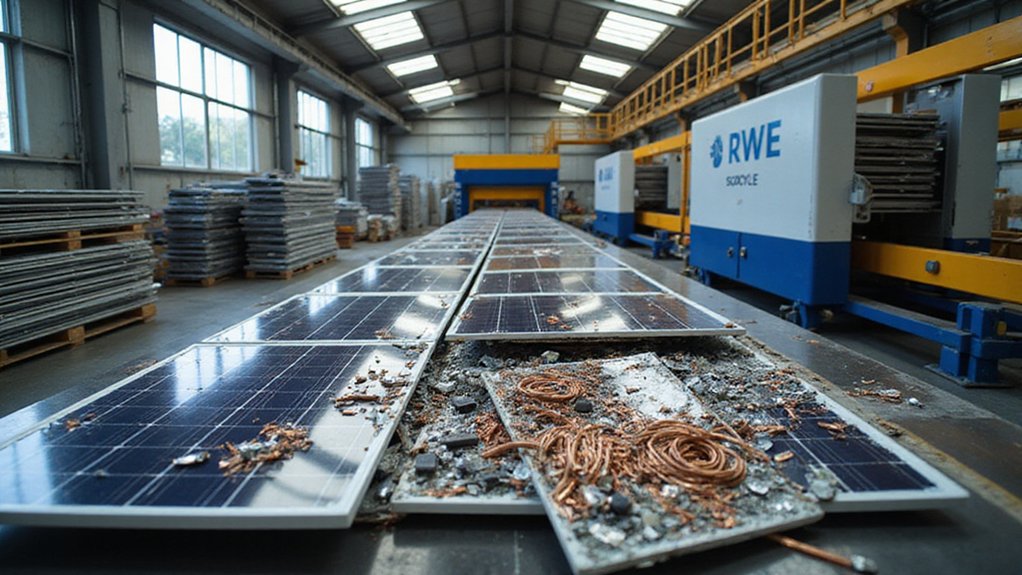The electric vehicle transformation has created an unexpected problem: what to do with all those old batteries. Rome’s Fiumicino Airport just found an answer that’s both practical and slightly genius. They’re using 84 discarded Nissan LEAF batteries to help power Italy’s busiest international hub.
The batteries, pulled from high-mileage cars and warranty returns, now store 2.1 megawatt-hours of electricity at the airport. That’s part of a larger 10 MWh battery system working alongside 55,000 solar panels. Together, they’re cranking out up to 31 gigawatt-hours of renewable energy annually. Not bad for batteries that were fundamentally headed for the scrap heap.
Old EV batteries storing 2.1 megawatt-hours alongside 55,000 solar panels, generating 31 gigawatt-hours annually at Rome’s airport
This whole setup, dubbed Project Pioneer and partly funded by EU Innovation Funds, represents Fiumicino’s push toward carbon neutrality by 2030. The second-life batteries handle the unglamorous but critical work of grid stabilization, peak shaving, and load balancing. When the sun’s blazing and the solar panels are producing more juice than needed, these old LEAF batteries soak it up. When clouds roll in or energy demand spikes, they release it.
Nissan worked with system integrator Loccioni and energy company Enel to make this happen. They specifically used a mix of Gen 3 30kWh and Gen 4 40kWh battery packs from different LEAF generations. The collaboration also includes Fraunhofer Italia-IEC, bringing together technical expertise from multiple organizations to tackle the complex engineering challenges. Each battery underwent strict testing and requalification—because nobody wants a battery failure at an international airport. The company even warranties these zombie batteries, betting they’ll last another six to seven years with daily cycling.
Here’s what makes this matter: instead of mining new materials for fresh batteries, Fiumicino is squeezing extra life from existing ones. It’s circular economy thinking applied to one of aviation’s biggest challenges. The airport reduces its carbon footprint, Nissan demonstrates its batteries have value beyond their first life, and tons of potentially hazardous waste stays out of landfills. This approach provides consistent power generation regardless of weather conditions, a key advantage over other renewable energy sources.
When these batteries finally give up the ghost, Nissan will handle the recycling and material recovery. Until then, they’re proving that yesterday’s car batteries can power tomorrow’s airports. It’s not exactly poetry, but for a sustainability project, it’s surprisingly elegant.
References
- https://www.electrive.com/2025/06/04/second-life-automotive-batteries-for-energy-storage-at-italian-airport/
- https://www.electrifying.com/blog/article/nissan-leaf-batteries-given-new-lease-of-life-at-airport
- https://electricdrives.tv/nissan-leaf-ev-batteries-find-second-life-as-battery-storage-at-rome-airport/
- https://ground.news/article/rome-airport-powers-up-with-recycled-nissan-ev-batteries
- https://www.carsifu.my/news/nissan-leaf-batteries-start-2nd-life-at-italys-largest-airport/









